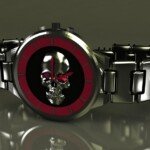Mastering Microns: Basic Guide to CNC Off Tolerance Processing
In a high-risk world of precision manufacturing, "Good enough" and "Perfect" It usually boils down to just microns. This is CNC closing tolerance machiningnot only where parts are made; their carefully crafted specifications are carefully designed, and these specifications break through the limits of possible mechanically. Whether used for aerospace hydraulics, medical implants, sophisticated robotics, or advanced optical components, these ultra-tight tolerances can be achieved and held, separating functional prototypes from mission-critical components. Let’s dig deeper into what we need.
Why close tolerance is crucial (obvious)
We know that tight tolerances ensure that parts fit together perfectly. But the meaning is more profound:
- Performance optimization: Accurate size directly affects factors such as fluid dynamics, vibration damping, heat transfer and electrical conductivity. Improper seals can leak; poorly mated bearings are worn prematurely.
- Predictability and reliability: The ingredients manufactured are consistent under pressure, reducing failure and extending life in critical applications.
- Assembly efficiency: Eliminates expensive manual installation, wear or rework on assembly lines, simplifying production.
- Features enabled: Many advanced technologies, especially in semiconductors and medical devices, cannot function properly without components that are processed to micron-level accuracy.
definition "Close tolerance": Not a certain degree
Although there is no single general definition, close tolerance machining usually refers to maintaining even tighter dimensional accuracy within ±0.0005 inches (±0.0127 mm) and even more stringent control of geometric tolerance (e.g., true position, flatness, cylindricality). It is crucial that The required tolerances are always defined by the part function. What is it "closure" For bicycle pedals, for jet engine fuel nozzles may loosen. Critical geometric tolerances are often the real challenge:
- Real location: It is crucial for components where the pins must be perfectly aligned with the holes.
- Parallelism/verticality: Essential for mating surfaces, ensuring uniform distribution and sealing.
- Cylindrical/roundness: For rotary dynamic components (such as shafts or bearings), they are not negotiable.
- Surface finish: Although not a size, RA values usually require very low (subscale) to seal the surface or low friction.
The arduous challenge of achieving microns
It’s not magic to consistently hit such a tight spec. It involves overcoming major obstacles:
- Thermal stability: #1 Enemy. Processing produces heat, causing the metal to expand at a minimum but sufficient to blow microscopic tolerance. Uncontrolled store temperature fluctuations have the same effect. Solution: Climate control and strict thermal management agreements are not negotiable. Some experts even shifted production schedules to cool nights with the most critical parts.
- Machine tool functions and calibration: Not all CNC machines are created equally. Achieving tight tolerance requirements:
- High-precision CNC machining center: The most common one is 5-axis machine (Provides excellent setup accuracy and complex geometric access).
- Super rigid structure: Minimize slight deflection caused by cutting forces.
- Advanced Controller: With high resolution feedback system, accurate interpolation and dynamic error compensation algorithm.
- Strict metrology: Onboard detection and laser calibration, combined with conventional, traceable third-party calibrations of the machine itself.
- Tools and strategies:
- Particulate Carbide and Diamond Tools: It is crucial in stability, clarity and minimal deflection.
- Balance tool holder: Hydraulic, suitable contraction or high-precision egg clips minimize jumps (usually 3 micron TIR is usually standard).
- Professional Strategy: Trochoidal milling (reduced radial participation), drilling, optimized speed/feed, temperature controlled coolant, vibration suppression tool holder (such as hydraulic or tuned shock absorbers), and sometimes ultrasonic assisted machining.
- Material consistency and stability: Even high-quality alloys have microscopic variations. The material must be forged/cast after pressure. Due to work hardening and toughness, some materials (e.g., inconel) present greater challenges than aluminum 6061 (e.g., aluminum alloys).
- Programming and setup expertise:
- CAM software mastery: High-speed machining strategies and advanced toolpath optimization are required to minimize heat and pressure.
- Virtual simulation: Collision avoidance and pre-verification tool paths are essential before cutting metal.
- Strict fixation: Custom fixtures provide absolute stability to prevent any workpiece from moving beyond the micron level. Proper benchmarking is crucial.
- Process Measurement: On-board detection during critical sequences can verify progress before final cutting is performed.
- Metrics: The Final Judge: Measuring microns requires the same precise measurement:
- CMM (coordinate measuring machine): Required for complex geometry and GD&T verification. It must be calibrated regularly in a controlled environment and operated by highly skilled technicians.
- Optical and laser scanners: For high resolution surface mapping.
- Special instruments: Typically customize specific key dimensions.
- Temperature control metering laboratory: Ensure accurate measurement of 20°C (68°F) parts and instruments according to international standards.
Greglight CNC: High-precision design
Implementing repeatable close-range machining is not a hobby. This is a demanding engineering discipline that requires a lot of investment and a professional focus. This is what precision manufacturers like Greglight CNC Dedicate its core functions:
- Advanced 5-axis arsenal: Our facility is built on the accuracy and flexibility of advanced 5-axis CNC machining centers, specifically targeting its stiffness, thermal stability and micron-level positioning accuracy. This allows us to solve complex geometry without damaging multiple settings for tolerance stacking.
- Process obsession: We don’t just run the parts; we designed the entire precision chain:
- Strict climate control (temperature and humidity).
- Proprietary fixed solutions for absolute part stability.
- Tool strategies optimized using particulate carbides and advanced coatings.
- Strict supplier controls to provide consistent certification materials.
- Invest in high-end CAM software and simulation.
- Comprehensive accuracy metrology: Our dedicated temperature controlled metering laboratory accommodates highly accurate CMMs and specialized instrumentation to reduce traceable verification to micron level. On-board detection provides vital process verification.
- End-to-end ownership: From initial material certification and expert processing to precise completion and final inspection, we control each stage to ensure edibleness and final dimension integrity of critical components.
- Material versatility: We work effectively with a wide range of demanding metals – aerospace aluminum and titanium, surgical stainless steel, inconel, tool steel and copper alloys – to understand the nuances required for each of the necessary to achieve tight tolerances.
- One-stop service: Need a specific finish, such as hard anodization, electroplating or professional coatings? We manage the entire process seamlessly, ensuring post-processing does not compromise carefully achieved tolerances.
Conclusion: Accuracy is a strategic advantage
CNC closing tolerance machining represents the pinnacle of subtraction manufacturing. This is a complex symphony of high-end machinery, cutting-edge tools, strict environmental controls, deep technical expertise and uncompromising metrology. Choosing a partner for these critical applications is more than just the cost; it’s about the capability, the proven process, and the absolute confidence that your parts will meet the extreme needs of them.
In a world where performance margins are shrinking and reliability is crucial, investing in precision processing is not a expense; it is a strategic advantage. When microns are important, work with manufacturers Greglight CNCwith our professional 5-axis functionality, process rigorous and dedication to true precision, ensure your most challenging designs become flawless.
FAQ: Your CNC tightly tolerant processing questions have been answered
Q1: What exactly to consider "Close tolerance" In CNC machining?
A: Although it depends on the context, it usually refers to dimensional tolerances within ±0.0005 inches (±0.0127 mm). More importantly, it usually includes harsh geometric tolerances (real position, flatness, cylindricality) measured in microns. Specific tolerances are always defined by the part function.
Q2: Is the distance between close processing not high?
A: Due to the required equipment, tools, environmental control, skilled labor and meticulous inspection, it is inherently higher than standard processing. However, the cost premium has to be weighed against the value of the component. In critical applications, the cost of failure (downtime, recall, safety risks) far exceeds the investment in precision manufacturing. We focus on optimizing strategies to effectively implement the required specifications.
Q3: Are all metals suitable for very close tolerance processing?
A: While it is possible, some materials are more challenging than others. Aluminum, brass and some stainless steel are generally more advantageous. Materials such as Inconel, Titanium and hardened tool steel create greater difficulties due to factors such as hardening of work, toughness and heat generation, and require a highly specialized approach. Discuss your material requirements with us.
Question 4: How do I make sure my parts actually meet the specified tolerance?
A: Verify accuracy by multi-layer method: 1) On-board detection during process inspection during critical phase, 2) Use calibrated high-accuracy CMMS (coordinate measuring machine), optical comparator, gloss comparator, laser scanner and custom Gauges and 3) detailed details and detailed descriptions of detailed final inspections in our temperature controlled metrology laboratory.
Q5: Can you deal with complex geometric shapes that require tight tolerances?
Answer: Absolute. This is Greglight’s Advanced 5-axis CNC machining. The 5-axis function allows for the machining of complex functions from the best angle in a single setup, greatly reducing setup errors and reference changes that plague the traditional 3-axis method when dealing with complex parts and critical tolerances.
Question 6: Will post-processing affect implementation tolerances?
Answer: Of course! Processes such as heat treatment may cause warp lines and some electroplating or coating constructions add layers. We break it down into machining strategies (e.g., pre-board dimensions) and then carefully select and control the post-processing method. As a one-stop service, we manage the entire sequence to ensure that the final part meets all dimensions and functional requirements.
Question 7: What file format do I need to provide a close tolerance project?
A: We need a fully detailed 3D CAD model with fully defined drawings (e.g., steps, IGES, parasites, solid work). Drawing is crucial because it specifies critical dimensions, tolerances (including GD&T), material specifications and all basic quality requirements.
Question 8: Does your machine compensate for thermal expansion during the day?
Answer: Modern high-precision CNC machines have complex thermal compensation algorithms based on sensor-based mapping extensions. It is crucial that We maintain strict ambient temperature control throughout the facility To minimize thermal drift of machines and workpieces, a stable baseline is provided for these compensations to work efficiently.
Prepare to understand what levels can be achieved with the most demanding projects? Contact Greatlight CNC for consultation and quote now. Our expertise in advanced 5-axis manufacturing is committed to turning your critical design into perfectly accurate components.

















